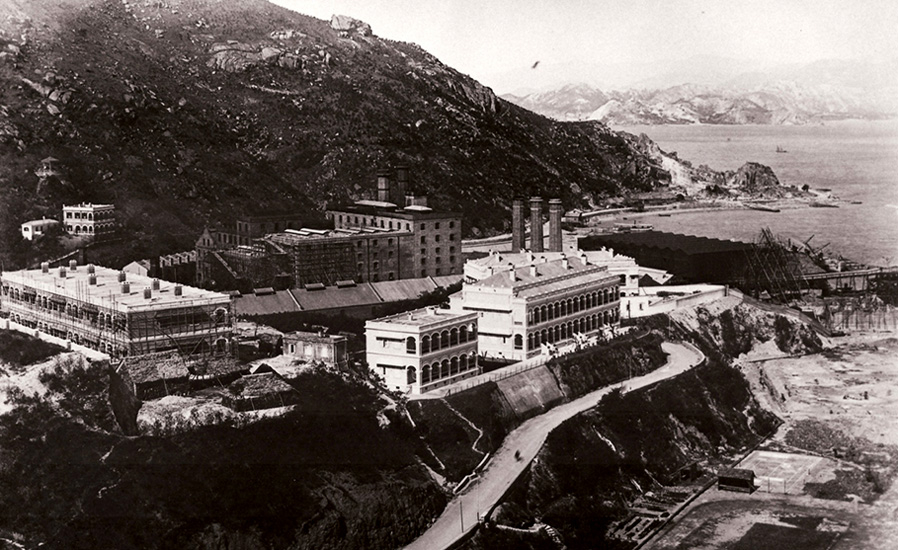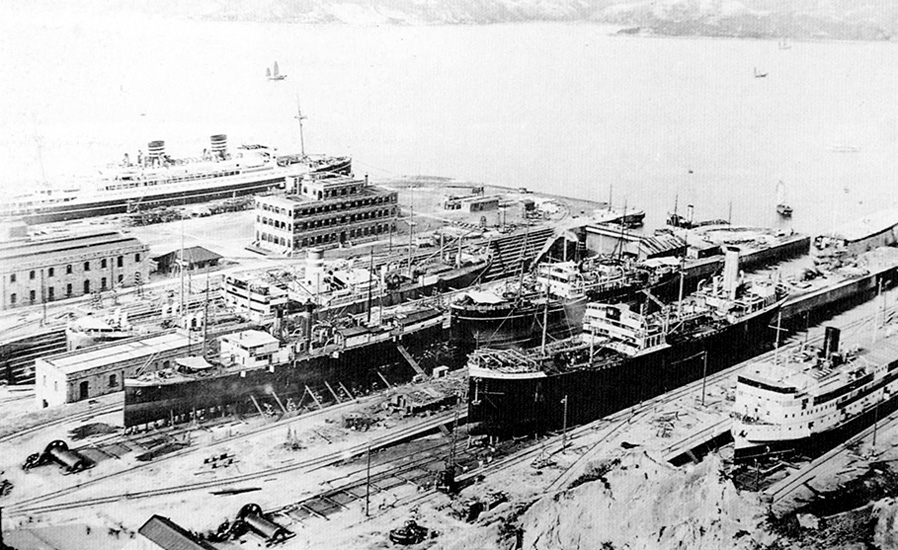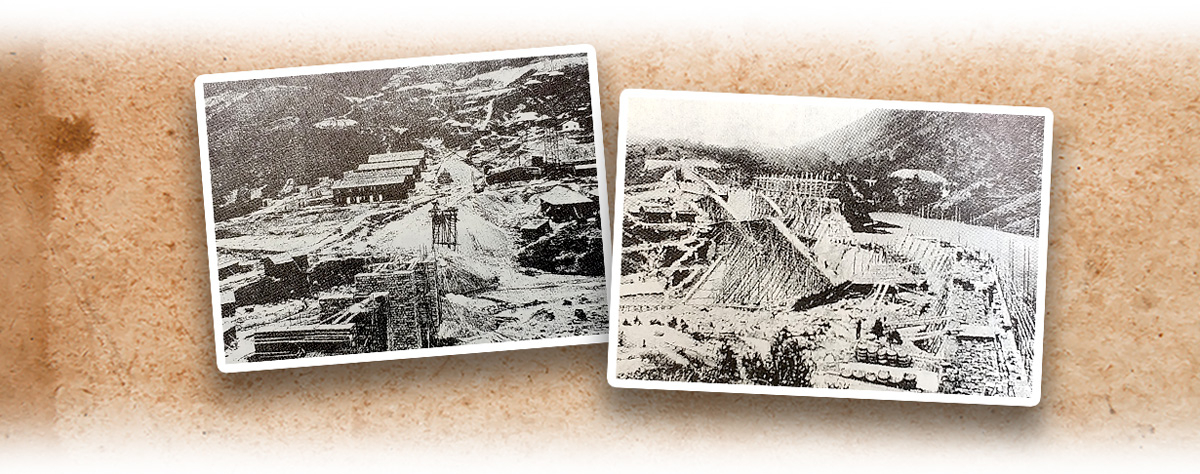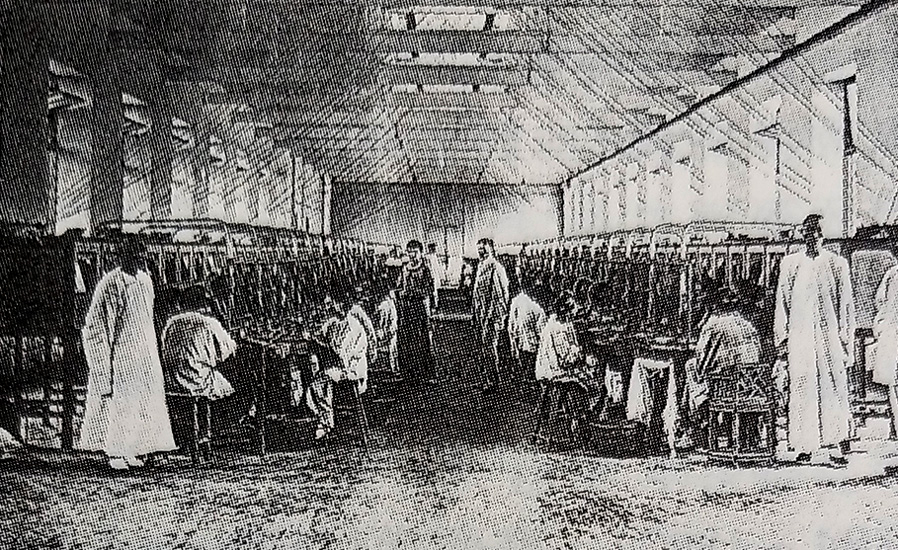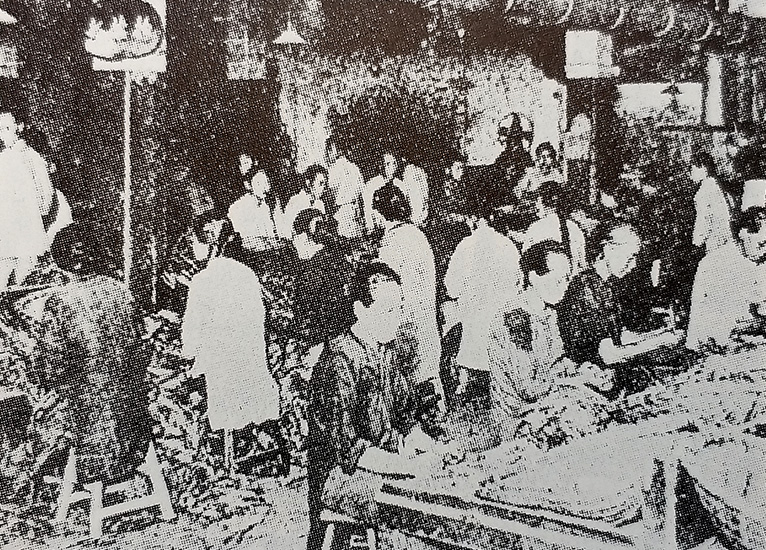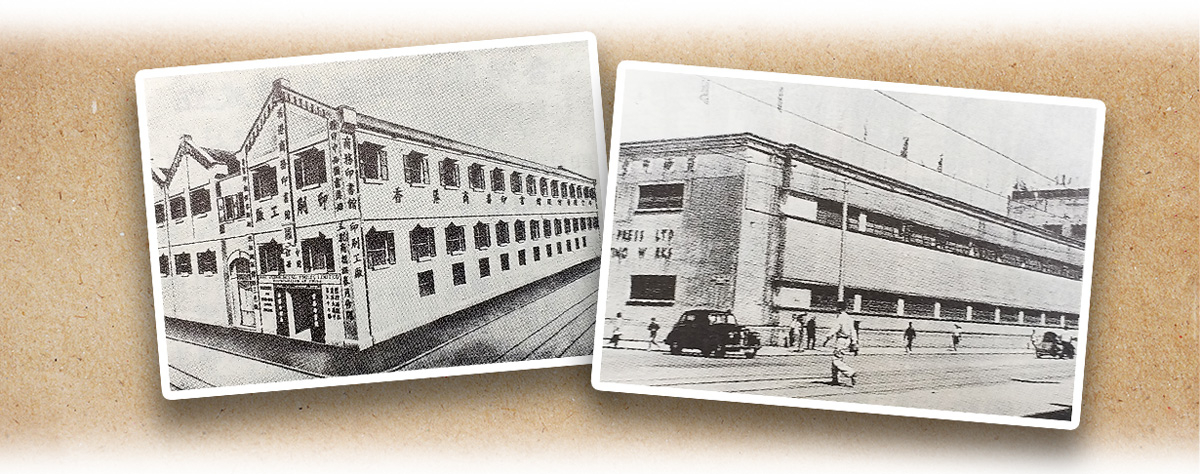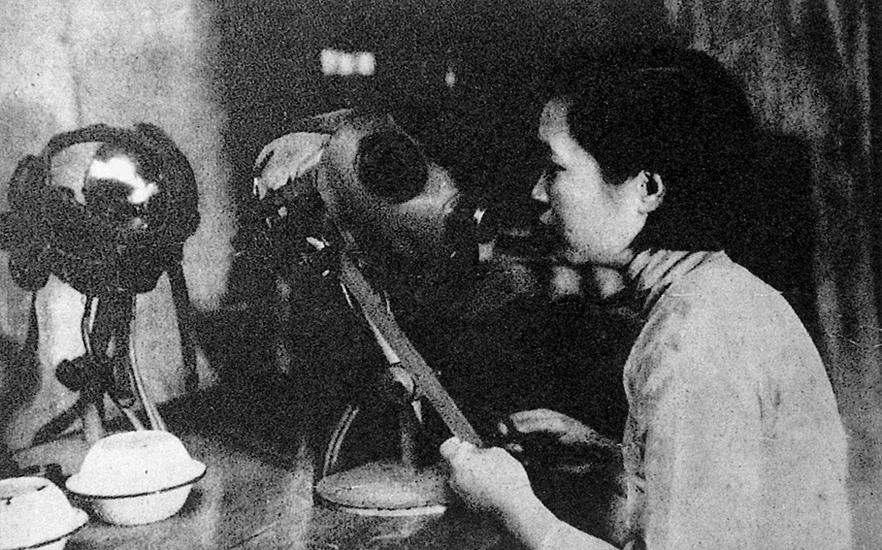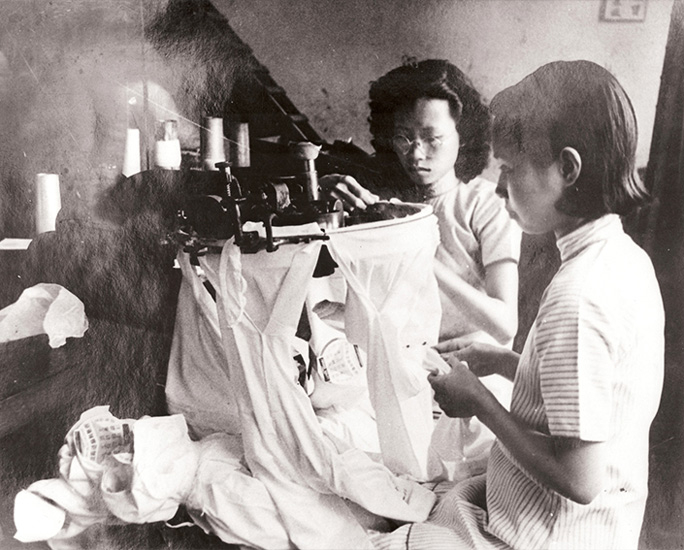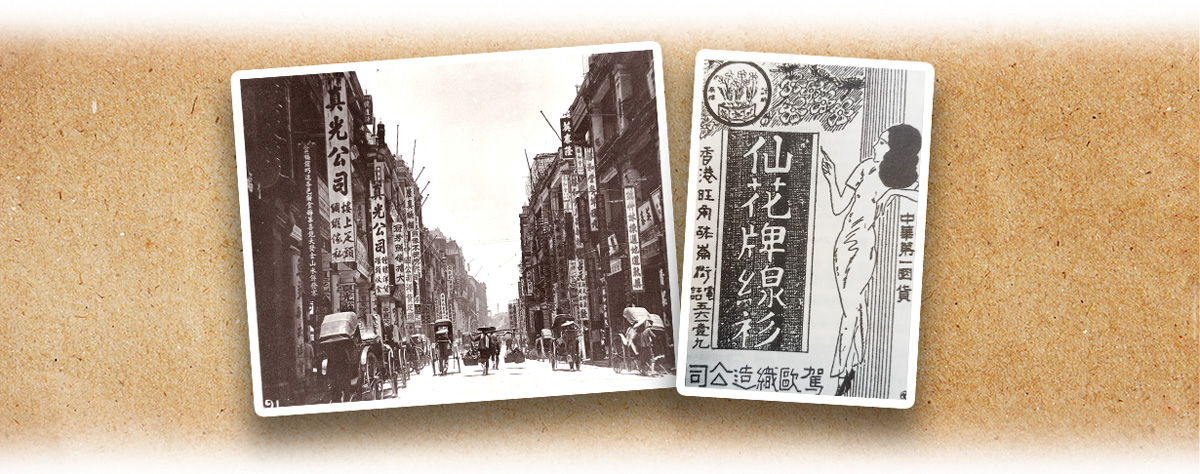Modern industrial enterprises emerged in Hong Kong between the end of the 19th century and the early 20th century. They mainly engaged in shipbuilding and ship repairing, and harbour engineering. Light industry emerged at a later stage. Most large enterprises were run by Westerners.
During the early 20th century, there was a rise of nationalism in the Chinese mainland. The Chinese government started taking back the rights on railways and mining from foreign countries, and mainlanders boycotted foreign goods. During the First World War and the early post-war period, Western powers mostly engaged in their home affairs, which gave China an opening to develop its own industry. Many Chinese entrepreneurs from the Chinese mainland (especially Guangdong﹝廣東﹞), Hong Kong, and overseas opened factories in Hong Kong. Hong Kong reached its first climax of pre-war industrial development between the 1920s and the mid-1930s. The Hong Kong industry was no longer dominated by Westerners. Chinese-owned enterprises gradually exceeded that of the Westerners in the light industry sector.
Hong Kong reached its second climax of pre-war industrial development between 1937 and 1941. The 1937 Total War of Resistance Against Japanese Aggression and the 1939 European warfare, together with the implementation of the Imperial Preference policy, provided new opportunities for the Hong Kong industry. As industrial and commercial cities such as Shanghai (上海), Guangzhou (廣州), and Wuhan (武漢) collapsed, some entrepreneurs fled to the south, bringing capital, equipment, and technology with them. They either moved their factories to Hong Kong or set up new ones. During this period, many factories in Hong Kong engaged in military production for the Chinese government, the Hong Kong government, or other European allies. The production supported the War of Resistance in the Chinese mainland and the world’s anti-fascist movement, and meanwhile promoted the local industrial development. At that time, Chinese-owned factories in Hong Kong received a lot of orders for military supplies such as helmets, gas masks, shovels, pick hammers, rubber shoes, water bottles, lunch boxes, puttees, military uniforms, belts, and machine parts. The Hong Kong industry prospered before the Pacific War.
|
|
How did the pre-war Hong Kong industry influence its post-war development? |
|
|
See answer below. |
Most of the factories in early Hong Kong were British-owned, for example Taikoo Sugar established in Hong Kong in 1881. Its refinery (in the photo) commenced production in 1884.
Taikoo Dockyard in Quarry Bay in 1930. It was the largest dock in the Far East at that time. The shipbuilding and ship repairing industry was an important heavy industry in pre-war Hong Kong, one of its major British consortia investors was Swire.
Left: the construction of the Beacon Hill Tunnel of the Kowloon-Canton Railway in 1907; Right: the construction of the Tai Tam Reservoir main dam in 1916. After Hong Kong became a free port, a lot of large-scale infrastructure projects were launched in the century followed. Some of the infrastructure is still in use today. This shows that the construction industry in Hong Kong attained a high level during the period.
A silk reeling factory opened by the British-owned Jardine Matheson in the early 20th century. At that time, light industry in Hong Kong was dominated by Western capital.
Dairy Farm was a famous food enterprise in early Hong Kong. It specialised in the production and supply of Western food. The photo shows a team of food delivery workers at Dairy Farm in the early 20th century.
Nanyang Brothers Tobacco Company Limited was founded by Jian Zhaonan (簡照南) and his brother Jian Yujie (簡玉階) in Hong Kong in 1905. It officially commenced production in 1906. The photo shows workers working in the factory.
The printing industry blossomed in pre-war Hong Kong. In 1924, the Commercial Press set up a printing factory on Catchick Street, Sai Wan (left). In 1943, it set up another printing factory on King’s Road, North Point (right).
A female worker making gas masks in a factory in Hong Kong in the 1930s. Military supplies were produced in large quantities in pre-war Hong Kong. While contributing to the War of Resistance in the Chinese mainland and the anti-fascist campaign in Europe, the military production also promoted the local industrial development.
A scene of the Chow Ngai Hing Knitting Factory in Hong Kong in the 1930s. Before the Second World War, the Chinese industrial capital in Hong Kong gradually exceeded that of the Europeans.
Before the Pacific War, Chinese industrialists gradually took the lead in the Hong Kong industry. In 1920, the European industrial capital in Hong Kong was about HKD50 million and the Chinese industrial capital was about HKD17.5 million. In the mid-1930s, the Chinese industrial capital exceeded HKD51 million while the European industrial capital remained. The industrial development manifested itself in the diversified industrial categories, an expansion of production scale, and the widespread of machine production. Some Chinese enterprises in pre-war Hong Kong were important in the history of China’s industrial development. Founded in 1921, the Chiaphua Iron and Steel Works successively set up branches in cities such as Shanghai, Guangzhou, Guilin (桂林), and Shantou (汕頭). The machinery used in the plant was made by famous European and American factories. As the scale of the plant grew over time, it gradually became the top iron and steel plant in the Chinese mainland.
Left: a bustling street scene of Hong Kong in the early 20th century; Right: a garment advertisement in a Hong Kong newspaper in the 1930s. There was substantial development of pre-war industry in Hong Kong. This helped promote the retail industry and encouraged commercial advertisements.
The Hong Kong industry developed rapidly between the two world wars when European countries were too weak to augment their investment in the Far East after the First World War. Under the Imperial Preference policy implemented in 1932, the British Hong Kong (a Commonwealth member) enjoyed tax concessions for industrial products, which facilitated exports. The Imperial Preference policy refers to the Ottawa Conference Agreement signed by the Commonwealth countries in 1932. It stated that all products manufactured with more than half of the materials grown or produced or from work done by the Commonwealth members could enjoy tax concessions within the Commonwealth.
|
|
How did the pre-war Hong Kong industry influence its post-war development? |
|
|
The influence is in the following ways: 1. It formed the foundation for the post-war industry in Hong Kong in terms of technology, investment, market connections, etc. 2. Infrastructure in pre-war Hong Kong, including railways and reservoirs, boosted the economy and people’s livelihoods in post-war Hong Kong. 3. The pre-war industry enabled the industrial enterprises in Hong Kong to establish corporate values that combine Chinese and Western cultures and spirits. It effectively promoted the industrial and economic development in post-war Hong Kong. |
The images in this material are provided by Professor Lau Chi-pang and Professor Liu Shuyong (Photos 1, 9 and 10) and Fotoe (Photos 2 and 8), and misc. photo sources. Every effort has been made to trace the copyright holders and obtain permission to reproduce this material. Please do get in touch with any enquiries or any information relating to this image or the rights holder.





